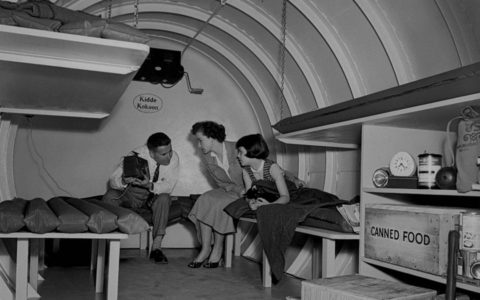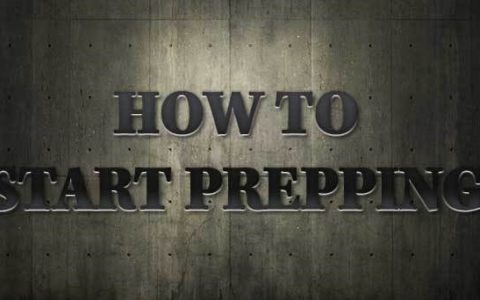
Kit, gear, or whatever you like to call it. The equipment we buy to survive, protect, get home, bug out, etc. Some of us that have served in the military and had to use all kinds of gear for our jobs, realized some of it was excellent and some just didn’t work for us. So we either bought or improvised our gear or kit to ensure we had what worked for us. This article will discuss organizing your survival kit into levels more so than the specific contents. I will discuss each level in more detail in further articles.
When it comes to buying your kit, look at what works for you. Do not go and buy the latest and greatest because of a slick marketing campaign or trend. Always find the biggest bang for your buck. A word of caution, do research and read reviews of those who used and/or tested the gear. You do not want to buy cheap gear that won’t last, but you don’t also have to buy expensive gear that does not work for you. So it is a personal choice. I don’t buy just from a single brand, I own items from various manufacturers like:
- HSGI taco pouches
- TAG battle belt
- 5:11 backpacks
- Duluth pants
- Solomon hiking boots
- Boker knives
- SOG multi-tools, etc.
I research the items for the specific need I will use and in most cases look at the multipurpose use of the item. I also look for the compatibility of the brands with other brands for modularity. One note to make; be sure to check the fastex buckles on the items, not all brands use the same type of buckle, and make sure they are good for the weight/tension that will be placed on them. You don’t want to be moving through the Appalachians to your bug out location and have your chest rig fail and fall apart at the wrong moment. You will need to be ready to make some field repairs once you establish security. So always have some 550 cord, heavy-duty sewing needles, 100 MPH tape, and/or sturdy safety pins on hand.
When I plan out my survival kit or gear, I think of it in levels. Each level has a purpose and compliments the others. One level of kit has duplicate items as the others so you can resupply your lower level kits or it has more robust items that may weigh heavier and require more logistics. In each kit you need the basic sustainment items to build a fire, gather, carry and purify water, build a shelter, signal for help or link up, hunt or trap for food, fix things, and basic medical needs like trauma to colds. The higher the level of kit, the more you have at your disposal.
Level 1 Kit – Think of Every Day Carry (EDC)
Level 1 should be items that you will have on your person no matter what you are doing. Some items are a good knife (folder or fixed), Flashlight, Watch, Wrist compass, Lighter, 550-cord bracelet, Multi-tool, and/or Concealed carry firearm. So imagine walking around the mall with your family, what do you have on your person that can help in a crisis? Medical items can be a CAT tourniquet on your belt or in a pocket to a bandana for an improvised tourniquet. It would be hard to always have that IFAK level of TCCC gear on your person. There are some decent “Patrol” IFAK’s out there that are slim in design.
Level 2 Kit
Should be some kind of load bearing equipment. Like a chest rig, old style LBE, or battle belt (w or w/o suspenders). It is also your get home bag, since this bag is smaller than a bug out bag and only set up to “get you home” it will have supplemental items that are similar to your chest rig. So depending on your scenario, you might only have the GHB and not your chest rig. I will discuss more the GHB in another article.
On this level, you can have items that will augment your level 1 kit. Enable you to carry ammunition for your rifle and/or pistol to be readily available. You will have your Individual First Aid Kit (IFAK) attached. You can also add more items for redundancy (2 is 1 and 1 is none). This kit can be kept in your vehicle, place of work, or at your residence.
Level 3 Kit
This kit should be a back pack of some type, about 4,000 to 6,000 cubic inches or 65 to 95 liters. This would be considered a week-long bag. A bug out bag should not only be “72 hrs.” you should have enough gear to last you 5-7 days depending on your skill sets, AOR, and proximity of your other levels of kit. This level 3 Kit is also used as your Bug out Bag, which will be discussed further in another article. Remember, Bugging Out refers to leaving your homestead to another location for an undetermined amount of time. Hopefully you have planned out your scenarios to ensure you have the mindset, skill sets, tactics and kit to make it to where you are going. This kit should be kept in your home, unless you plan on bugging out from your work location etc.
Level 4 Kit
This Kit should be several durable containers or bags that you can load into your vehicle. The containers could be pelican cases, action packers, military kit bags or other type of durable containers. They should not be too large to move by oneself. Your vehicle should be part of this level of kit. Since you can load more fuel, water and gear in and on your vehicle. Your GHB bag, that you take with you to work and trips will become a “bail out bag” if you have to retreat from your vehicle under duress. Level 4 should contain items that will aid you in moving longer distances to get to your destination. Ideally, it is located at your house to aid you if you need to bug out and move to your cabin in the Appalachians.
If you are departing from your house, load up your Level 3 Backpack and your level 2 GHB (now bail out bag) and/or Chest rig for additional augmentation depending on the situation. If you have to move on foot due to vehicle breakdown, then you have your Level 3 backpack, level 2 chest rig and GHB is you designed it to attach to your Level 3 BOB. But one thing to remember always make every attempt to stay with and repair your vehicle during a crisis. Your vehicle provides a lot of advantages but also has several disadvantages. It may give you a sense of security, noise, harder to hide, and mobility is restricted to where a vehicle can go.
As you can see, the levels of kit you have, augment and complement each other. Don’t forget your homestead should also have plenty of supplies. You could use this TTP and make your house your level 5. So depending on your scenario, you may not have all levels of kit with you. I normally have my Level 1 (EDC), Level 2 (GHB), and Level 4 (modified) with me whenever I drive my vehicle anywhere within my AOR. If I have to drive further like to another state or across the country, I add more items to my Level 4.
How to use your levels of kit
You should always use your kit from the highest to the lowest, Level 4 to Level 1. So you always have the critical gear on your person if you need to abandon the vehicle or your backpack. If you do use items form your level 1 or 2 use the higher levels to resupply those items. For example while I was in the military it was SOP that we drink out of our 2 QT canteens attached to our rucksacks before we drink out of our 1 QT canteens on our LBE/Chest rig. This way if we did a recon patrol without our rucksack we had full canteens or if we made contact and had to ditch/destroy our rucks we had full canteens.
Other self-sufficiency and preparedness solutions recommended for you:
The vital self-sufficiency lessons our great grand-fathers left us
Knowledge to survive any medical crisis situation
Liberal’s hidden agenda: more than just your guns
Build yourself the only unlimited water source you’ll ever need
4 Important Forgotten Skills used by our Ancestors that can help you in any crisis




















